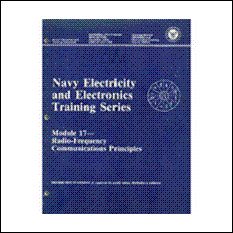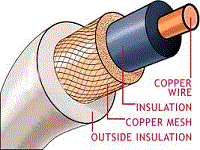Light Emitting Diodes
Light emitting diodes (LED) are a semiconductor device that emits
incoherent light, through spontaneous emission, when a current is passed
through it. Typically
Light emitting diodes
for the 850-nm region are fabricated using GaAs and AlGaAs. LEDs for the
1300-nm and 1550-nm regions are fabricated using InGaAsP and InP.
The basic LED types used for fiber optic communication systems are the surface-emitting LED (SLED), the edge-emitting LED (ELED), and the superluminescent diode (SLD). LED performance differences help link designers decide which device is appropriate for the intended application. For short-distance (0 to 3 km), low-data-rate fiber optic systems, SLEDs and ELEDs are the preferred optical source. Typically, SLEDs operate efficiently for bit rates up to 250 megabits per second (Mb/s). Because SLEDs emit light over a wide area (wide far-field angle), they are almost exclusively used in multimode systems.
For medium-distance, medium-data-rate systems, edge light emitting diodes are preferred. ELEDs may be modulated at rates up to 400 Mb/s. ELEDs may be used for both single mode and multimode fiber systems. Both SLDs and ELEDs are used in long-distance, high-data-rate systems. SLDs are ELED-based diodes designed to operate in the superluminescence mode. A further discussion on super luminescence is provided later in this section. SLDs may be modulated at bit rates of over 400 Mb/s.
Surface-Emitting LEDs
The surface-emitting LED (shown in the picture below) is also known as the Burrus LED in honor of C. A. Burrus, its developer. In SLEDs, the size of the primary active region is limited to a small circular area of 20 mm to 50 mm in diameter. The active region is the portion of the LED where photons are emitted. Theprimary active region is below the surface of the semiconductor substrate perpendicular to the axis of the fiber. A well is etched into the substrate to allow direct coupling of the emitted light to the optical fiber. The etched well allows the optical fiber to come into close contact with the emitting surface. In addition, the epoxy resin that binds the optical fiber to the SLED reduces the refractive index mismatch, increasing coupling efficiency.

Example of the SLED structure.
Edge-Emitting LEDs
The demand for optical sources for longer distance, higher bandwidth systems operating at longer wavelengths led to the development of edge-emitting light emitting diodes. The next picture below shows a typical ELED structure. It shows the different layers of semiconductor material used in the ELED. The primary active region of the ELED is a narrow stripe, which lies below the surface of the semiconductor substrate. The semiconductor substrate is cut or polished so that the stripe runs between the front and back of the device. The polished or cut surfaces at each end of the stripe are called facets.

Example of the ELED structure.
In an ELED the rear facet is highly reflective and the front facet is antireflection-coated. The rear facet reflects the light propagating toward the rear end-face back toward the front facet. By coating the front facet with antireflection material, the front facet reduces optical feedback and allows light emission. ELEDs emit light only through the front facet.
ELEDs emit light in a narrow emission angle allowing for better source-to-fiber coupling. They couple more power into small NA fibers than SLEDs. ELEDs can couple enough power into single modefibers for some applications. ELEDs emit power over a narrower spectral range than SLEDs. However, ELEDs typically are more sensitive to temperature fluctuations than SLEDs.

















